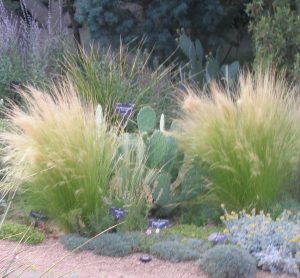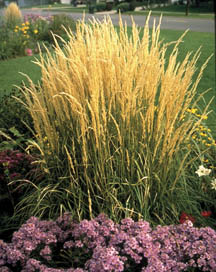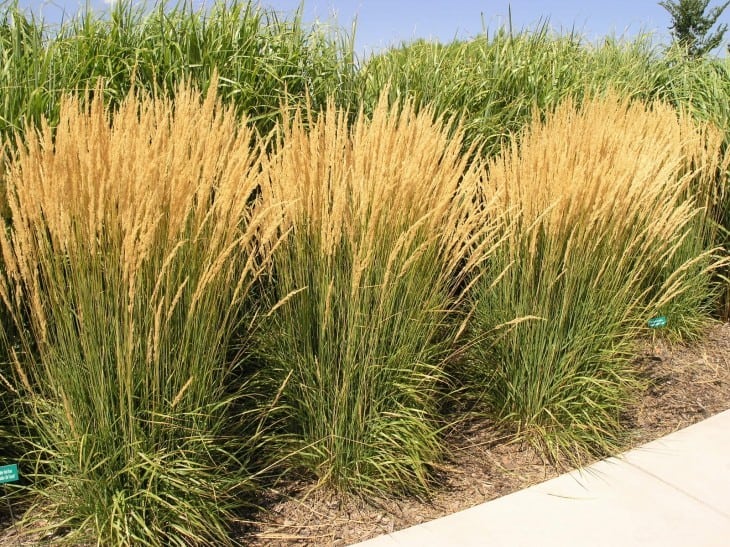As I sit in my garden, the sunlight glistening off the dew-kissed blades of grass, I’m reminded of why decorative grasses have become a staple in Colorado landscapes. These resilient plants offer a combination of beauty and practicality, making them a fantastic choice for both residential and commercial properties. In this article, we’ll explore everything you need to know about decorative grasses in Colorado, from choosing the right types to maintenance tips that will keep your garden lush and vibrant.
Why Choose Decorative Grasses in Colorado?
Decorative grasses are not just aesthetically pleasing; they serve multiple functions that can benefit any garden. Here are some compelling reasons to include them in your landscape:
- Drought Tolerance: Many decorative grasses are well-adapted to Colorado’s dry climate.
- Low Maintenance: Once established, they require less water and care compared to traditional flowering plants.
- Year-Round Interest: Grasses offer different textures and colors throughout the seasons.
- Wildlife Habitat: They attract beneficial insects and various wildlife.
Popular Types of Decorative Grasses in Colorado
With a variety of species to choose from, you can find the ideal decorative grass that suits your taste and landscape needs. Here’s a look at some of the most popular types:
1. Blue Grama (Bouteloua gracilis)
This native grass is known for its fine texture and beautiful seed heads that curl into a distinctive ‘eyelash’ shape. Blue grama is drought-tolerant and thrives in full sun, making it perfect for Colorado’s hot summers.
Pros and Cons
| Pros | Cons |
|---|---|
| Drought-resistant | May not thrive in shaded areas |
| Low maintenance | Can be invasive in some areas |
2. Feather Grass (Stipa tenuissima)
Feather grass is loved for its delicate, wispy appearance, which adds softness to garden designs. It sways beautifully in the wind and can tolerate poor soil conditions.
.jpg)
Pros and Cons
| Pros | Cons |
|---|---|
| Attractive and ornamental | Needs to be protected from strong winds |
| Fast-growing | Requires well-drained soil |
3. Switchgrass (Panicum virgatum)
Switchgrass is widely used in native plant gardens due to its adaptability and hardiness. This grass can grow taller, providing a dramatic backdrop for shorter plants.
.jpg)
Pros and Cons
| Pros | Cons |
|---|---|
| Provides height and structure | Can spread aggressively if not controlled |
| Pollinator-friendly | May need pruning in late winter |
4. Little Bluestem (Schizachyrium scoparium)
This grass boasts stunning coloration, ranging from green in the summer to vibrant orange and red shades in the fall. Little bluestem is perfect for adding seasonal interest to your landscape.
.jpg)
Pros and Cons
| Pros | Cons |
|---|---|
| Colorful foliage | Requires full sun for best results |
| Excellent erosion control | Can become dormant in extremely dry conditions |
Best Practices for Planting Decorative Grasses
When it comes to planting decorative grasses, following best practices can make a world of difference. Here are the steps I recommend based on my personal gardening experience:

1. Choose the Right Location
Evaluate sunlight, soil type, and moisture levels in your garden. Most decorative grasses prefer well-drained soil and full sun, although some varieties can tolerate partial shade.
2. Prepare Your Soil
Before planting, amend your soil with organic matter to improve drainage and nutrient content. This will help your grasses establish roots more effectively.

3. Planting Techniques
Dig a hole that is twice as wide as the root ball but no deeper than the ball itself. Place the grass in the hole, backfill with soil, and water thoroughly.
4. Mulching
Applying mulch around the base of your decorative grasses can help retain moisture, suppress weeds, and maintain an even soil temperature.

5. Watering
During the initial growing phase, regular watering is crucial. Once established, most decorative grasses are drought-tolerant. However, it’s essential to monitor their needs based on weather conditions.
Maintenance Tips for Decorative Grasses
Keeping your decorative grasses healthy and vibrant involves a few ongoing maintenance tasks:
1. Pruning
Most decorative grasses benefit from pruning in late winter to early spring. Cut back dead foliage to about 6 inches above the ground to promote new growth.
2. Fertilization
While many grasses don’t require fertilizer, applying a slow-release organic fertilizer in spring can give them a boost if the soil is depleted.
3. Monitoring for Pests and Diseases
Keep an eye out for pests such as aphids or diseases like rust. Early detection can help prevent widespread damage.
Creating a Beautiful Landscape with Decorative Grasses
Adding decorative grasses to your landscape can create stunning visual interest. Here are a few design ideas based on my experiences:
1. Mixed Planting
Combining different varieties of grasses can create a beautiful contrast in height, texture, and color. Pair taller grasses like switchgrass with shorter varieties such as blue grama for depth.
2. Pathways and Borders
Use decorative grasses to define pathways or borders in your garden. Their natural, flowing form can soften hard landscapes.
3. Seasonal Displays
Incorporate grasses in seasonal displays by adding flowering plants or perennials that bloom at different times of the year. This will ensure your garden remains vibrant all year round.
Cost Considerations for Installing Decorative Grasses
Cost is often a deciding factor when planning a landscaping project. Here’s a breakdown of potential costs associated with installing decorative grasses:
1. Plant Costs
The price of decorative grasses varies based on variety and size. On average, you can expect to pay between $5 to $30 per plant.
2. Soil Amendments and Mulch
Budget for soil amendments, mulch, and any necessary fertilizers. Expect to spend around $50 to $100 depending on the size of your garden.
3. Labor Costs
If you choose to hire a landscaper, labor costs can add significantly to the budget. On average, gardening labor can range from $25 to $75 per hour.
FAQs About Colorado Decorative Grasses
1. What decorative grasses are native to Colorado?
Blue grama, little bluestem, and switchgrass are some of the native grasses well-suited for Colorado’s environment.
2. Can decorative grasses survive Colorado winters?
Yes, many decorative grasses are hardy and can withstand Colorado’s cold winters. They often become dormant but will return in the spring.
3. How often should I water my decorative grasses?
Once established, most decorative grasses require minimal watering. However, during dry spells, a deep watering once a week is beneficial.
4. Are decorative grasses good for erosion control?
Absolutely! Many decorative grasses have deep root systems, making them excellent for preventing soil erosion on slopes or in windy areas.
5. What’s the best time to plant decorative grasses in Colorado?
The best time to plant decorative grasses is in the spring after the last frost or in early fall for optimal establishment.
Conclusion
Incorporating decorative grasses into your Colorado landscape can enhance its beauty, resilience, and functionality. With the right selection and care, these plants offer more than just visual appeal; they contribute to a sustainable and thriving garden environment. So, whether you’re a seasoned gardener or a newbie like I once was, consider adding these wonderful grasses to your landscape. Happy planting!